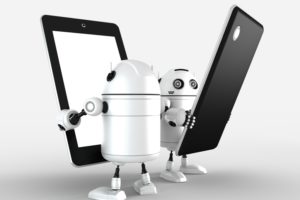Artificial intelligence, as well as machine learning tools, do have the potential to analyze large datasets and also extract meaningful insights to enhance patient outcomes, an ability that is definitely proving to be very useful in radiology as well as pathology.
Artificial intelligence pathology
Images that have been obtained by MRI machines, CT scanners, and x-rays, as well as biopsy samples, allow clinicians to see the inner workings of the human body. However, these images do often contain large amounts of complex data that can be difficult and time consuming for human providers to evaluate.
AI tools can indeed augment the workflow of radiologists as well as pathologists, who are acting as clinical decision support and also which enhance care delivery.
Artificial intelligence radiology
Imaging analytics is a rather a perfect example of the complexity that is involved in all different disciplines, as well as the pace of progress that one sees in AI development o the whole.
What are the top ways AI will enhance radiology and pathology and lead to better patient care?
ADVANCED CLINICAL DECISION SUPPORT AND DIAGNOSTICS
- AI and machine learning have demonstrated great potential in supplementing and verifying the work of clinicians, particularly in the complex field of imaging analytics.
- Pathologists must meticulously evaluate medical images to diagnose patients, sometimes examining hundreds of tissue slides for traces of abnormalities.
- Machine learning, as well as deep learning algorithms, do offer the opportunity to streamline pathologists’ decision-making, thus allowing them to review detailed data with no doubt improved accuracy and rather fewer errors.
- If the network can indeed indicate which of the patients do have cancer and which do not, then this technology can rather serve as triage for the pathologist. While the researchers do acknowledge that the tool does show much promise in supporting the work of pathologists, the team also did take note of that AI will not be replacing clinicians anytime in the immediate future.
- The network was really good at identifying the cancers, but it will indeed take time to get up to 20 years of practice and also required training of a pathologist to identify complex cases and mimics.
- AI can indeed improve treatment decisions and also patient care extends beyond the realm of research.
- Artificial intelligence algorithms do have tremendous potential to help health care providers diagnose as well as treat medical conditions.
- This software does help providers to detect wrist fractures rather very quickly and also aids in the diagnosis of fractures.
- AI can also provide further clinical decision support by improving diagnostic processes and also enabling providers to be able to identify diseases with greater accuracy.
- In pathology, many diagnostic processes do currently rely on physical tissue with samples that have obtained through biopsies. AI can enhance radiology tools, making them thus accurate and detailed enough to replace physical samples.
- Researchers are making use of machine learning in order to develop a virtual biopsy tool that will indeed make early detection of melanoma faster and cheaper.
- Removing skin lesions is no doubt an invasive and intensive process; more so for patients who have numerous suspicious moles.
- Researchers will, of course, be able to identify an individual’s lesions more accurately.
In the future, one can expect this lesion detector into other imaging modalities, including the MRIs.
 ENHANCING PRECISION MEDICINE
ENHANCING PRECISION MEDICINE
- Using AI algorithms to extract meaning from medical images will also allow radiology and pathology to make significant contributions to precision medicine.
- Differentiating between cancer types can be a very challenging task for pathologists and can also lead to wide variations in the identification of the stage as well as the grade of cancer.
- The machine learning tool has been able to identify many more cancer-specific characteristics that can be actually observed by clinicians, which offer the possibility of more personalized treatments as well as therapies.
- Researchers who are developing AI and machine learning algorithms can make use of the warehouse data to build innovative tools and discover new ways to be able to treat disease.
- AI can help clinicians to identify the onset of disease in patients earlier so that they can plan for long-term care needs.
- AI has the potential to serve as an aid to radiologists and pathologists tasked with making informed clinical decisions and choosing effective treatments.
- With AI and machine learning, the field of imaging analytics can allow clinicians to improve care delivery and patient outcomes.
Read more about: Impact of Artificial Intelligence on Aviation Industry




